Managing our Water – Melbourne Park Redevelopment Stormwater Harvesting Project
Written by a Melbourne school student, Remi F.
Outline of the Management Strategy
The construction of a $6.9 million Stormwater Harvesting project at Melbourne Park began in 2010 as part of the 3-stage $972 million Melbourne and Olympic Park Redevelopment Project. Funded by the Victorian State Government and completed in 2021, the overall redevelopment goal was to enhance the precinct’s status as a world class sporting and entertainment precinct, notably the Australian Open Tennis Grand Slam event held annually during January.1
The major objective of the stormwater harvesting facility was to reduce demand on potable water for irrigation. It was tasked with replacing up to 52 ML/y of potable water for green-space irrigation and toilet flushing within the precinct, about 60% of the precinct’s demand.
Completed by the end of 2011 with minimal interruption to daily activities at Melbourne Park, the stormwater harvesting facility was funded by the Victorian State Government and a $6.9 million Federal Government Grant through the 2012 National Urban Water and Desalination Plan under the Water for the Future Initiative.
Using existing underground drainage pipes, the stormwater harvesting scheme first captures stormwater run-off from stadium roofs and various surface and paved surfaces across Melbourne Park.2 The harvested water, which would otherwise be discharged to the Yarra River3, is instead diverted, pumped, and stored in a 4.5 million litre underground storm water storage tank, before being treated using direct media filtration, recycled glass, granulated activated carbon, and UV disinfection by an underground treatment plant located in the new Western concourse extension.4 The recycled water is finally tested prior to distribution into various areas in Melbourne Park for irrigation and toilet flush water.5
Water Engineering Consulting Group IV Water have been associated with the ongoing advice and support to Melbourne and Olympic Parks Management for the stormwater harvesting facility’s design, operation, and maintenance. This includes an audit, upgrades, and expansion of the stormwater harvesting facility in 2017.6
Evaluating the success of the selected management strategy
Tennis Australia data shows that the AO contributed more than $2.71 billion to Victoria’s economy over the past decade.7 In 2020 alone, the AO injected $387.7 million of Real Gross State Product into the Victorian economy, up more than 12% from $347.2 million in 2019. In just two years, the AO contributed over 60% of the entire redevelopment project cost, including the stormwater harvesting facility, into the Victorian economy.
902,000 people attended the AO over two weeks in 2022 compared with 686,006 in 2012. That is a growth of 215,994 people over 10 years, or around 22,000 more people each year. Other entertainment, cultural and sporting events at Melbourne Park further increase the loading on our precious potable water resources at the site.
The stormwater harvesting scheme at Melbourne Park is a successfully designed, built, and maintained large scale water harvesting scheme that saves significant usage of potable water.8 Currently it supplies approximately 68% of the required non-potable water demand, or 52,000,000 litres per year. There is scope for future expansions to supply above 80% of non-potable demands, which is very important given the increasing number of people attending the AO each year. Given the cost of potable water is $2.72/1000 litres, sewerage disposal charge is $1.83/1000 litres, projected maintenance costs are $53,000/year, the expected annual cost saving (potable water cost offset plus sewerage disposal charge offset for toilets minus maintenance) is $114,000/ year.9
Environmentally, prior to the stormwater harvesting facility, the 52,000,000 litres of non-potable, or dirty water, from the Melbourne Park precinct would otherwise drain into the Yarra River. Dirty water includes stormwater and run-off, but also sediment (soil), impact from ongoing construction works around Melbourne Park, pollution such as general rubbish, and plastics from patrons eating and drinking while at Melbourne Park.
Melbourne and Olympic Park’s future includes a range of energy and water efficiency programs including the augmentation and integration of the Olympic Park precinct existing stormwater schemes to service all MOP’s facilities across the 44-hectare site.
The stormwater harvesting project operated at the Melbourne and Olympic Parks precinct can be replicated in part or in full in other projects both in Victoria, nationally and internationally. The profile of the Melbourne and Olympic Parks Precinct and associated national and international events such as the AO will ensure the greatest exposure possible for the stormwater harvesting facility operations at the precinct effecting the attitude, behaviour and decisions related to water conservation and management for hundreds of thousands if not millions of people in Victoria, Australia and internationally.
List of Figures
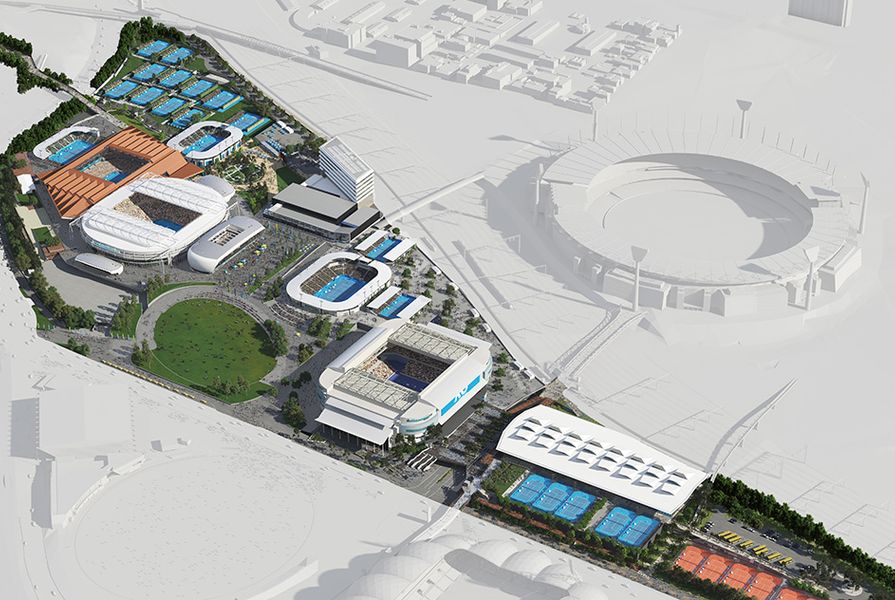
Figure 1: Melbourne Park Redevelopment Site, located about 3km east of the CBD, on the northern bank of the Yarra River. Note MCG is shaded out in the right hand side of the image. Source: www.architectureau.com
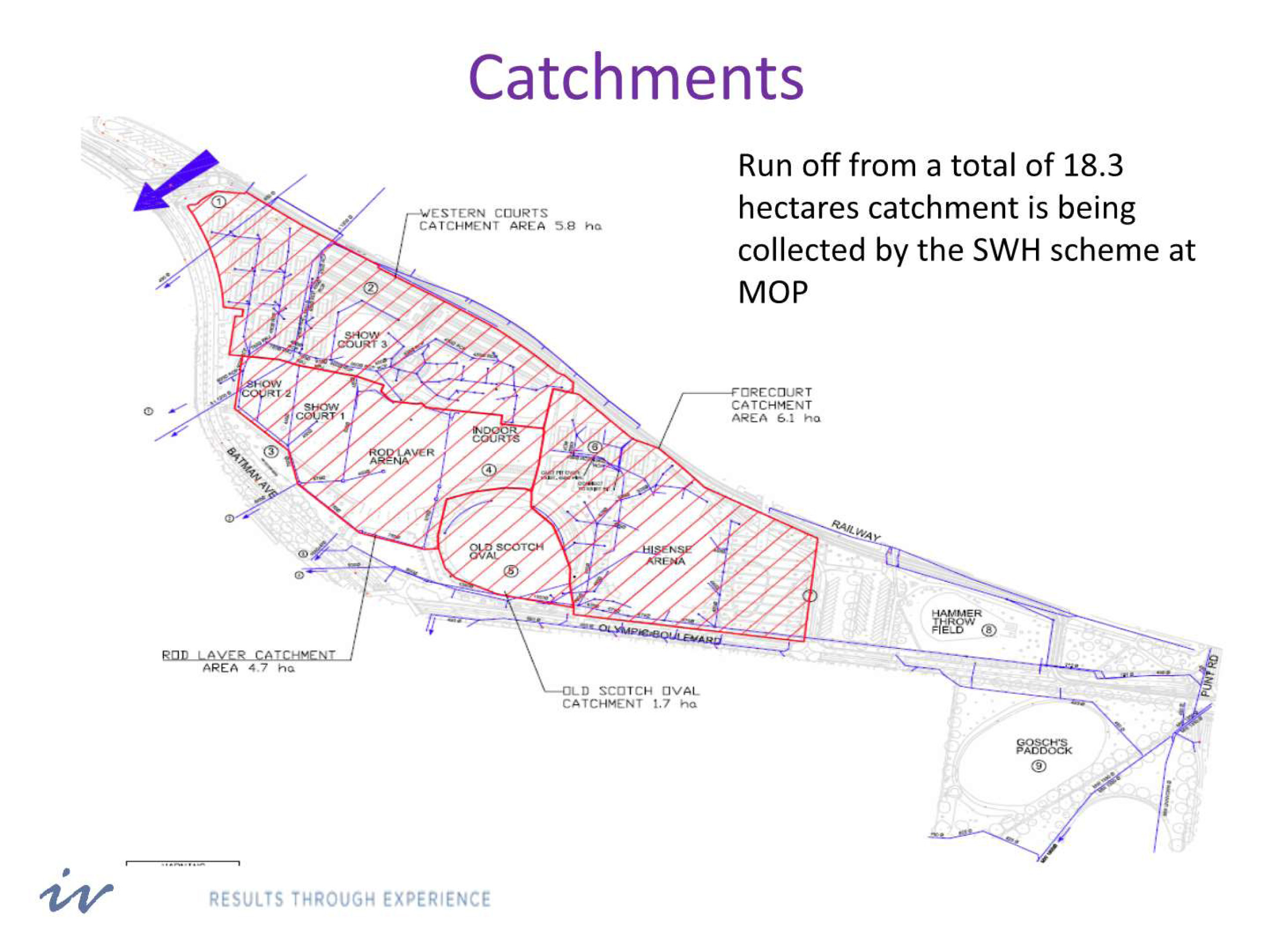
Figure 2: Catchment areas across Melbourne Park. Source: “Stormwater Harvesting at MOP”, prepared by IV Water as part of their presentation for the 2019 “National Water Recycling and Reuse Technology” Conference, Melbourne.
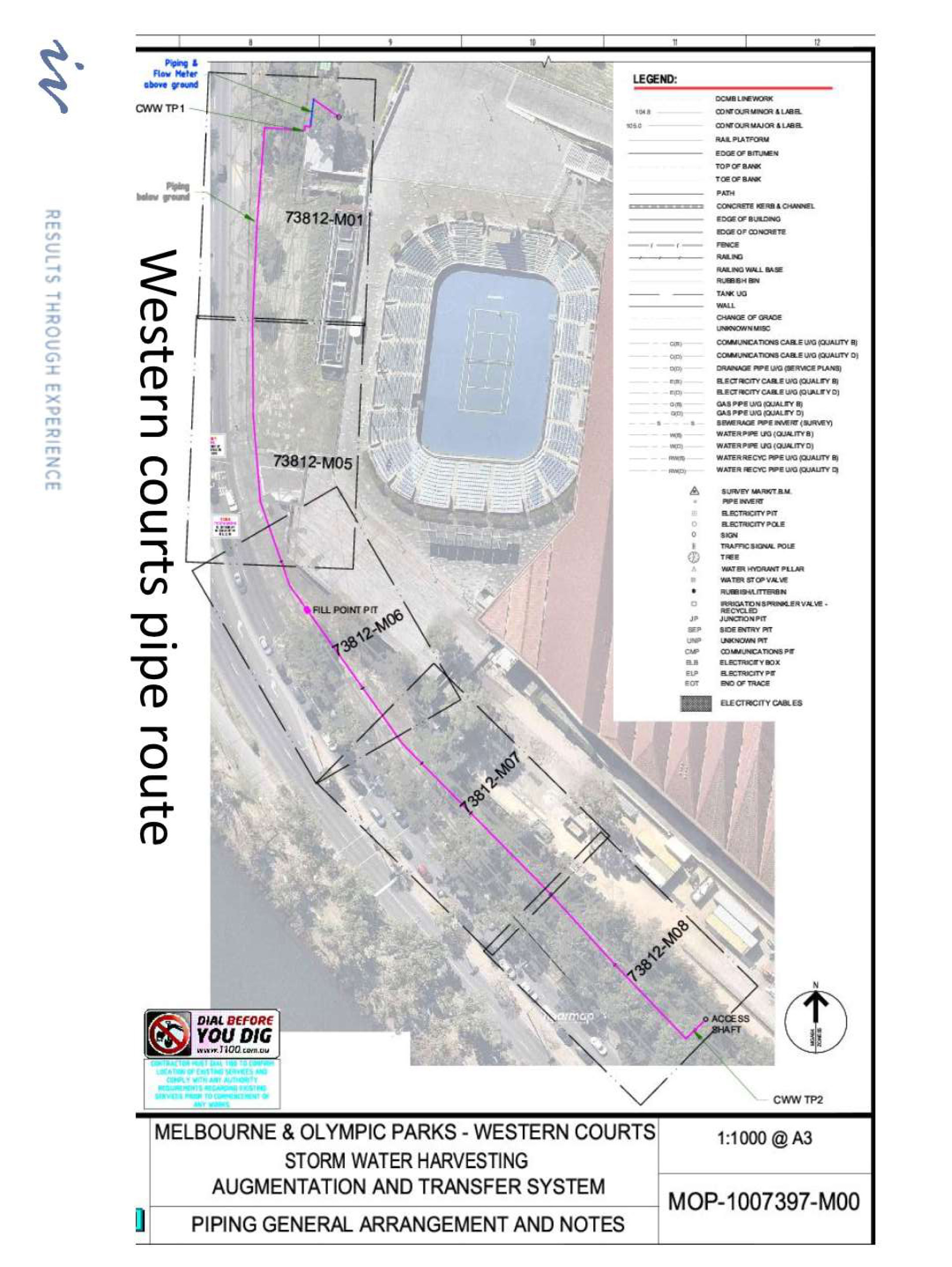
Figure 3: Western Courts Pipe Route. Source: “Stormwater Harvesting at MOP”, prepared by IV Water as part of their presentation for the 2019 “National Water Recycling and Reuse Technology” Conference, Melbourne.
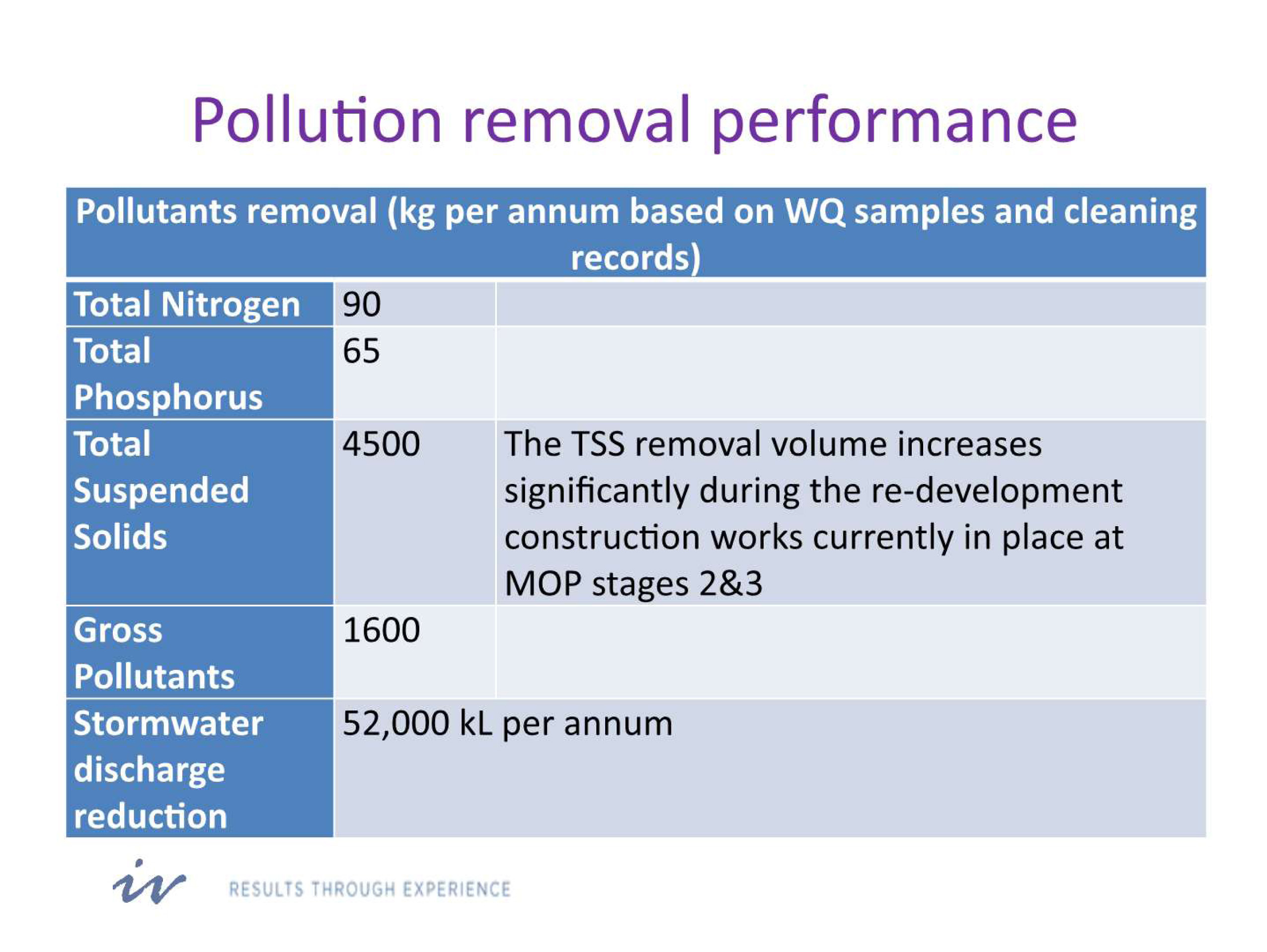
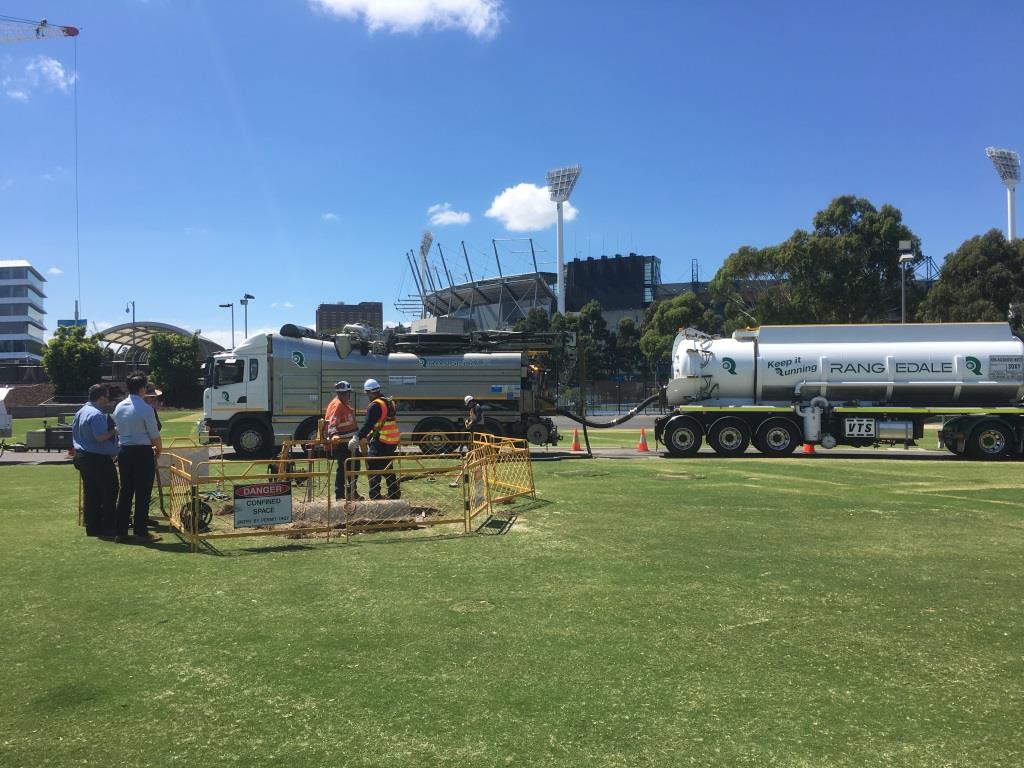
Figure 4: Pollution removal performance data and recycled water being filled into tankers for irrigation use. Source: “Stormwater Harvesting at MOP”, prepared by IV Water as part of their presentation for the 2019 “National Water Recycling and Reuse Technology” Conference, Melbourne.
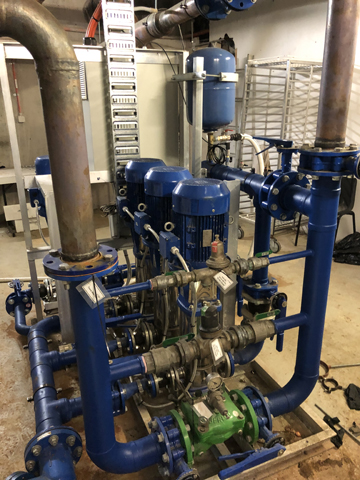
Figure 5: Part of the Stormwater Harvesting Operations at Melbourne Park. Source: “Stormwater Harvesting at MOP”, prepared by IV Water as part of their presentation for the 2019 “National Water Recycling and Reuse Technology” Conference, Melbourne.
References
https://besixwatpac.com
https://ivwater.com.au
https://development.vic.gov.au
https://ausopen.com/articles/news/ao-2020-delivers-record-benefits-victoria
https://usgbc.org
https://tennis.com.au
https://architectureau.com
“Stormwater Harvesting at MOP” power point presentation prepared by IV Water, shared with author via email 27.09.2023.
Acknowledgements
I would like to thank Civil Engineer Mr. Iouri Vaisman for his generous time, sharing of knowledge, information, and in kind support educating me about water conservation and management.
1 See Figure 1: Melbourne Park Redevelopment Site. The National Tennis Centre along with redeveloped Margaret Court Arena, Tennis HQ, and Rod Laver Arena, have been awarded LEED Gold Certification. LEED is the international Leadership in Energy and Environmental Design (LEED) rating, the most used green building rating system in the world.
2 See Figure 2: Catchment areas across Melbourne Park.
3 The Environmental Protection Agency Victoria (EPA) was contacted for information about how the diverting of 52ML/y of non-potable water from the Yarra River would impact their water quality monitoring in the Yarra River. The Applied Sciences Team is yet to reply by email, but I was told that for a project of this size with water reuse, General Environmental Duty standards at a minimum would apply.
4 See Figure 3: Western Courts Pipe Route.
5 See Figure 4: Pollution removal performance and recycled water being filled into tankers for irrigation use.
6 This Summative Report was prepared with the in-kind assistance of Civil Engineer Mr. Iouri Vaisman and IV Water Engineering Consultants, who were the Chief Designers for the Stormwater Harvesting Project at Melbourne Park.
7 Nielson Sports were commissioned by Tennis Australia to conduct a study into the 2020 AO economic cost benefit analysis using Computable General Equilibrium modeling provided by the Centre of Policy Studies at Victorian University.
8 See Figure 5: Part of the stormwater harvesting operations at Melbourne Park.
9 Over the past 10 years of operations the stormwater harvesting facility's water sampling program has measured pollutant levels in both dirty and treated water, providing the basis for pollutants reduction estimates quoted. This data was provided by IV Water as part of their presentation for the 2019 “National Water Recycling and Reuse Technology” Conference, Melbourne.